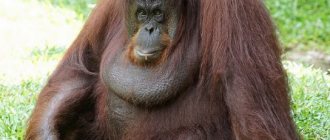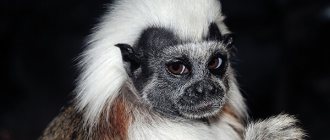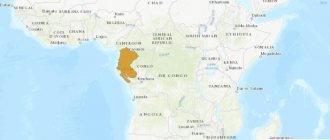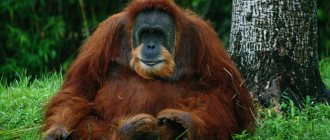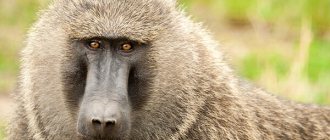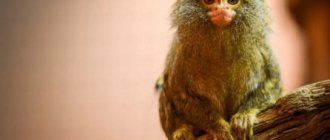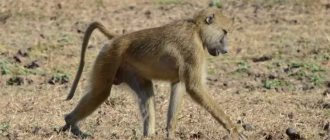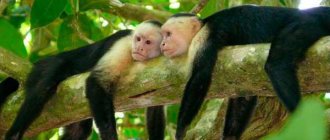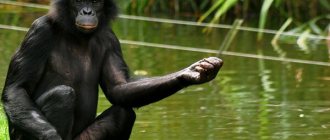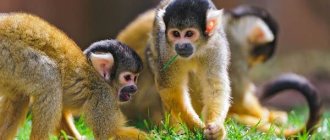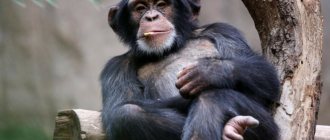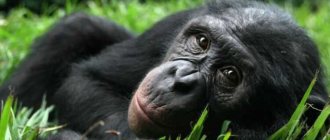Origin of the species and description
Photo: Gorilla
Previously, gorillas, along with chimpanzees and orangutans, were grouped into the family Pongidae, but are now classified in the same family as humans - hominids. As is clear from genetic data, gorillas separated from their common ancestor with humans approximately 10 million years ago, earlier than chimpanzees (4 million).
The remains of their immediate ancestors have never been found due to the fact that organic materials are poorly preserved in their habitats. Therefore, scientific research in this direction is difficult and is carried out mainly on the basis of data on other species - hence the many misconceptions in the past.
Video: Gorilla
The closest fossil to the ancestors of gorillas is considered to be Chorapithecus, who lived 11 million years before our era. Scientists believe that the ancestors of gorillas were smaller and lived in trees, had virtually no natural enemies, and were not required to make too much effort to search for food. Because of this, there was no incentive for the development of intelligence, although gorillas have considerable potential.
The current subspecies of gorillas took shape several tens of thousands of years ago. By that time, two isolated areas of their habitat had formed, adaptation to which led to increasing genetic divergence.
The scientific description of the species was only made in 1847, but people have encountered gorillas for a long time. As early as the 5th century BC, Carthaginian sailors saw animals called “gorillas.” It is not known for certain whether these were actually gorillas or chimpanzees. In modern times, travelers mention encounters with large apes, and according to the description these are gorillas: this is how Andrew Battelle described them in 1559.
Interesting fact: Scientists' assessment of the intelligence of gorillas increased greatly after it was recorded that a young female, named Itebero, learned to crack nuts with a stone, and it was determined that no one taught her to do this.
Previously, it was believed that only chimpanzees were capable of using this method (and for this they needed to be trained for a long time), and gorillas were much less intelligent. After this, other cases were identified in which gorillas showed unexpected intelligence - for example, using a log as a floating bridge or a stick to test the depth.
Diet and lifestyle of primates
Most primates live in the jungle. But they are also found in temperate forests, savannas, deserts, mountains and on sea coasts. The order contains both terrestrial and arboreal species, active day or night, preferring to feed on insects, fruits or leaves.
55% of all primate species, including monkeys, arachnids and gibbons, are active during the day, eating fruit and living in trees. Another 20% are leaf-eating colobus monkeys, howler monkeys and langurs. The rest of the order are nocturnal arboreal insectivorous species (tarsiers, lorises and galagos), nocturnal arboreal fruit-eating animals such as small lemurs, and finally diurnal fruit-eating terrestrial apes such as baboons, macaques and chimpanzees.
Primates
However, there are a number of exceptions to this scheme. Gelada feeds mainly on grass. Slender-bodied lemurs live in trees and eat leaves, but are active at night. In addition, some species of the lemur family, such as brown and meek lemurs, are active both day and night.
This form of daily activity arose in them, apparently, under pressure from a predator - the Madagascar eagle.
The insect-eating primates live under the forest canopy and are active at night. Species that live on the ground and feed on fruits and leaves wake up as daylight approaches. New World monkeys have returned to a nocturnal lifestyle. Currently, they, along with tarsiers, are the only nocturnal monkeys.
When the ancestors of lemurs arrived in Madagascar about 40 million years ago (possibly on arboreal “rafts”), they found many empty ecological niches. As a result of rapid evolution, about 40 new species appeared there.
The size of primates is closely related to their lifestyle. Many predators are active during the day. Therefore, diurnal species of monkeys (most haplorhines) are, as a rule, larger than nocturnal species (most prosimians).
The average body weight of a female monkey is about 6 kg, which is significantly more than that of prosimians - 1 kg. Terrestrial species are usually more massive than arboreal ones, since the former run the risk of encountering a predator, both terrestrial-arboreal and flying.
Ground-dwelling baboons - mandrills and drills - weigh up to 14 kg, while the female typical tree monkey weighs only 4 kg.
Body size is also related to diet.
The largest of the primates consume the leaves. This food is always available in abundance and is available throughout the day. The leaves are low in calories and have low nutritional value. But large monkeys can get by on plant foods because their energy needs are low. In contrast, small primates with high metabolic rates do not have this advantage. They feed on insects. Between these two poles are species that eat fruit, as well as omnivores that feed on fruits, leaves, and insects.
Body size matters when choosing a habitat for a species; other things being equal, a large animal needs a large area to find a sufficient amount of food. Among the leaf-eating prosimians, the golden-headed sifaka, weighing 3.3 kg, occupies an area of 9-12 hectares, while the 600-gram weasel-like lemur easily manages 1.5 hectares. The nature of the food eaten is also reflected in the area required for each individual.
Garnett's galago is not much larger than the slender-bodied lemur, but due to the former's need for protein-rich insects, it requires a hunting range no smaller than that of the sifaka. These requirements for individual home range inevitably affect population density: the weasel-tailed lemur is more numerous than the golden-headed sifaka or Garnett's galago.
The green parts of plants are not always easily accessible. Therefore, primates are able to assimilate leaves, fruits, and insects. Molars with a pressing surface grind plant food. The elongated digestive tract contains bacteria necessary to break down plant cell walls.
Such bacteria are found in the stomach (for example, in colobus monkeys and langurs), in the cecum (in bamboo and slender-bodied lemurs), or in the large intestine (in prehensile-tailed monkeys and gorillas). In contrast to folivores, frugivorous monkeys are characterized by relatively large incisors because fruits require more processing than leaves before chewing. But the digestive tract of these animals is simple, since fruits contain little fiber.
Insectivorous primates have a combination of these adaptations. They have well-developed molars to crush the hard coverings of beetles, but a simple intestine.
Some primates eat tree resins and gums. Using specialized incisors, they make holes in the bark and then use their claws to extract the semi-liquid contents.
Gum-eating western galagos, fork-banded lemurs and marmosets have an enlarged cecum.
The bacteria contained there help digest the gum.
The year-round diet of most primates includes leaves, fruits, and to some extent insects. Therefore, the description of the feeding specialization of a competitive species reflects only the relative importance of the main components. From this point of view, tarsiers are very special primates: they are the only representatives of the order that feed only on animal food.
Predation also plays a role in the lives of chimpanzees and baboons. Mainly males hunt. Small ungulates and other monkeys become their prey.
In chimpanzees, collective hunting is organized in a very complex manner. In Tanzania, chimpanzees successfully hunt red fat beetles. As a result, the number of colobus monkeys has halved. All monkeys are afraid of predators, and it is strange when another species of monkey plays this role.
Snakes, eagles and large cats (especially for arboreal representatives of the order) are the main natural enemies of primates.
In the green monkey population in Kenya, 50% of all individuals become prey to predators. And in one of the reserves in Madagascar, owls annually destroy a quarter of the population of mouse lemurs.
But primates have some morphological and behavioral means of self-defense. Small species, such as nocturnal prosimians, feed alone and are adept at hiding from predators.
Daytime ones tend to stay in groups. Living in a group provides a great advantage, since each individual has “extra eyes” - a neighbor who will warn of the sudden appearance of a predator.
The group, united, can even drive away the predator. In baboons and some other species, for example, in red fatbodies, males unite into squads that are able to repel any enemy.
There are known cases when a group of male baboons killed a leopard - their most terrible enemy. Such benefits increase as the group size increases. Baboons, which live mainly on the ground, can form groups of up to 30 individuals, while tree monkeys rarely have more than 20. Two or more different species of monkeys have been observed several times to form multi-species communities. This gave great advantages to all its members.
To reduce the risk of attack, baboons do not enter areas with good and plentiful food if there is a predator there.
Arboreal species such as capuchins and long-tailed macaques prefer to forage in the canopy rather than under the forest canopy, where they can more easily become prey. Even terrestrial species such as baboons are forced to stay close to trees, which they can climb into when attacked by a predator.
When monkeys cannot escape dangerous situations, they are very vigilant and make alarm calls when a predator appears.
Green monkeys have different alarm signals that indicate the approach of a specific enemy - a big cat, an eagle or a snake. Listening to the screams, they react to them differently: in the first case, they run into the trees, in the second, they look up and run into the thickets, and in the third, they stand on their hind legs and carefully look at the ground.
Many species of primates that inhabit the rainforest divide their habitats among themselves so that competition for food is minimal.
Differences in feeding time, food preferences, and forest tiers are taken into account here.
In the West African rainforests, five species of prosimians feed at night. The tiny Demidov's galago feeds mainly on insects in the upper tier. Here the potto feeds on fruits. Frugivorous graceful galagos use the middle and lower tiers, while Allen's galagos do not rise above the bushes.
The eastern potto finds insects among the bushes. During the day, in the same forest, omnivorous mandrills find food in the bush layer.
Gorillas also eat leaves there. Chimpanzees eat fruit and are found in all layers of the forest. In the upper tiers, red colobus monkeys eat leaves of many trees, flower buds and flowers.
Wild monkeys have a varied diet that consists of roots, insects, fruits and herbs. Captive monkeys are typically fed a balanced diet of fruits and vegetables, as well as monkey chow, a dry food fortified with vitamins, minerals and proteins.
The monkey's diet varies depending on the species. For example, the East African faith monkey's diet consists of flowers, bulbs, bark and roots, but the faith monkey also supplements its diet with eggs and rodents.
Owl monkeys, found in the rainforest, are nocturnal eaters that consume a diet of leaves, fruits and insects. Red colobus monkeys eat primarily leaves and are known to eat from over 60 different plant species.
Langur monkeys are also early eaters.
Monkeys are divided into two separate groups. New World primates are apes that live in South and Central America, while New Testament primates live in Asia and Africa. New World primates have tails with gripping abilities but lack opposable thumbs.
Most Old World primates have opposable thumbs, but their tails are usually haphazard or nonexistent. New species of monkeys in the world include the squirrel monkey, spider monkey, emperor tamarin and night monkey. Old World monkey species include langurs, golden perch, mandrill, drill, colobus and pata.
Appearance and features
Photo: Gorilla animal
Gorillas are very large monkeys, their height can reach 180 cm. When compared with men of the same height, male gorillas look much more powerful - their shoulder width is about a meter, and their weight is 150-200 kg. The muscle strength of the upper limbs exceeds the capabilities of human hands on average by 6-8 times.
The body, in contrast to the elongated human one, is closer to a square shape, the limbs are long, the palms and feet are wide. The powerful jaws protrude strongly forward. The head is large, with a characteristic leathery thickening in its upper part. The eyes are set close and the forehead is low. The gorilla has a powerful digestive system due to the fact that it has to digest a lot of plant food, which is why its belly is wider than its chest.
Almost the entire body is covered with long hair. If it is brown in cubs, it darkens over time until it becomes almost black. After puberty, males develop a silver stripe on their backs. With age, the hair on the back falls out completely.
It may seem that the thick fur all over the body can hinder gorillas in the climate in which they live, however, at night the temperature is sometimes quite cool - up to 13-15 ° C, and in such conditions the fur helps them not to freeze.
Males are distinguished by a more powerful nape, which is why the hair on the top of the head sticks out. But this is where the external differences practically end, otherwise females and males look almost the same, the only difference is in size - males are noticeably larger.
Western and eastern gorillas are different - the former are somewhat smaller and their fur is lighter. Males of western gorillas have a body length of about 150-170 cm and a weight of 130-160 kg, females - 120-140 cm and 60-80 kg, respectively.
Deadlift: Gorilla vs. Man
Shorter legs and longer arms make gorillas mechanically preferable for this climb.
Strongest man Eddie Hall set a world record with a 500kg deadlift in Leeds, UK.
Gorilla - 1089 kg. This is based on a 6x ratio. The basis for this prediction was a 1975 report that was reportedly included in the Guinness Book of World Records: “A 100-pound chimpanzee can deadlift 600 pounds with ease.”
Manifestations of force are rare and almost never recorded. One rare video showed a gorilla pulling a banana tree as if it were a tiny branch. If you've ever seen a banana tree up close, you'll realize that it's not nearly as simple as it looks. The video showed well the strength of this animal.
Where does the gorilla live?
Photo: Gorilla primate
The habitats of the western and eastern gorillas are separate. The first live mainly in Gabon, Cameroon and Congo - near the West African coast. They also live in some neighboring countries, but in much smaller quantities. Eastern gorillas live in two subpopulations - the Virunga Mountains and Bwindi National Park.
According to genetic data, the separation of populations occurred a million years ago, but after that for a long time they continued to occasionally interbreed. As a result, the species are still genetically close - they completely separated no more than 100,000 years ago. It is assumed that this was due to a large inland lake that appeared in Africa at that time.
Gorillas prefer tropical forests and swampy areas located in flat areas. It is important that the habitat and the surrounding lands are rich in grass and trees, because they require a lot of food, especially since they settle in fairly large groups.
It is assumed that because of this they did not repopulate most of the Congo, which is why the western and eastern populations were completely separated: these forests were heavily shaded and there was quite a bit of grass growing in them, not enough for food.
Reason 3. Muscle structure
Recently, scientists have found differences in the muscle structure of primates and humans. It was determined that humans are weaker than monkeys due to differences in nervous systems. In us, it exercises greater control over the force of muscle contraction, but prevents powerful muscle contractions. At the same time, primates, including gorillas, cannot make movements that require accuracy and clarity. As a result, they often use more muscles to move than the situation requires. A person can save and conserve energy, and has greater endurance. That is, our brain acts as a fuse that prevents us from damaging the muscular system. In monkeys this function is less pronounced.
What does a gorilla eat?
Photo: Big gorilla
Searching for food takes up most of gorillas' time: since they are herbivores, and at the same time large animals, they need to eat a lot. The jaws are massive, which allows them to cope with tough food. Their diet consists of leaves, stems and fruits.
Most often, gorillas eat:
- bamboo;
- bedstraw;
- wild celery;
- nettle;
- pygeum;
- liana leaves
Since all of the above contain few salts, to compensate for their lack in the body, gorillas eat clay in small quantities. It is interesting that, although in nature they do not eat animal food, when kept in captivity they adapt to human food.
The diet of eastern and western gorillas is almost the same, but their preferences are different. Eastern birds for the most part feed on the plants themselves, but consume fruits to a much lesser extent. But Westerners look for fruits, and feed on grass only secondarily. Sometimes they walk 10-15 kilometers to get to fruit trees and feast on fruit.
In any case, the calorie content of such a diet is very low. Therefore, gorillas are forced to go around large territories - they remember the places where food is found, and then return to them. As a result, their every day turns into a tour of such places, sometimes diluted by the search for new ones, since the productivity of the old ones inevitably decreases over time.
They do not need to go to water, because along with plant food they receive a lot of moisture. Gorillas generally do not like water - when it rains, they try to hide from it under the canopy.
Interesting fact: Every day a gorilla needs to eat about 15-20 kilograms of plant food.
Reason 2. Food
Many sports fans do not understand why herbivorous mammals are capable of reaching 2 m in size and 170 kg of pure muscle mass. The secret of gorillas is simple - they eat grass, fruits and celery, and this food contains a lot of protein. In addition, you should not imagine gorillas as natural vegetarians, since on occasion they happily consume meat.
Features of character and lifestyle
Photo: Male gorilla
Gorillas devote the first half of the day to searching for food. They have to move a lot in search of food - they walk on all four limbs, on half-bent palms, resting on the ground with their backs. In rare cases, they can stand on two legs. They often travel not on the ground, but through trees, showing great agility for such heavy animals.
It gets hot at lunchtime, so they take a break: sleep or just relax on the ground, in the shade. After some time, they again go around to places where they can refresh themselves.
They sleep at night, making nests in trees. They are used only once - the gorilla spends each subsequent night in a different place, building a new nest. The arrangement process is approached carefully; it takes a lot of time - most of the second half of the day, until darkness.
Although the appearance of a gorilla may seem frightening, and the expression of its muzzle often seems gloomy to people, their character is calm - with the exception of certain situations. Most of the time they are busy chewing food, reminiscent of cattle - this shapes their character.
In addition, they try not to waste energy, because the more they move, the longer they will have to eat - for such large herbivores this is a very important factor. The cubs behave differently - they are noisy, move and play more.
Social structure and reproduction
Photo: Baby gorilla
Gorillas live in groups, each with one male, 2-5 females, as well as growing individuals and small cubs. In total, such a group can number from about 5 to 30 monkeys. They live sedentary lives, each group occupies a certain area, which becomes their territory.
“Borders” are completely bypassed with regularity once every two to three weeks, and if any other group finds itself within their boundaries, it is expelled or a conflict begins.
The male has unshakable authority - he is the largest and strongest, he decides when and where the group will move, and where to stop for the night. Conflicts can arise between females - some of them quarrel among themselves, it can lead to fights with bites. Such collisions are usually stopped by the male.
Conflicts arise between males much less frequently; this occurs if the young, grown and strengthened, challenges the old, trying to lead the group. And even in such cases, a fight usually does not occur, because gorillas are very strong, and it can result in severe injuries.
Therefore, more often the males limit themselves to beating themselves in the chest, screaming, and rising on their hind legs to demonstrate their full height - after which one of the rivals admits that the other is stronger.
Leadership in the herd is needed in order to mate with females - only the leader has this right. A female gives birth on average once every four years, because you will need to spend time not only carrying a child, but also caring for it. Pregnancy lasts 37-38 weeks. At birth, the cubs weigh little: 1.5-2 kg.
Then the mother carries the baby with her on her back for a long time. When he grows enough, he begins to move on his own, but continues to stay with his mother for several more years - by the age of 5-6, young gorillas often move separately, building their own paths to search for food. They become completely independent even later - by the age of 10-11 years.
Interesting fact: Gorillas use several dozen different sounds to communicate with each other, although they have nothing close to language.
There are two main ways to form new groups. First: having reached full maturity, the gorilla does not always, but often leaves the group in which it grew up and lives alone before forming its own group or joining another. Usually this period lasts up to 3-4 years.
In addition, females can move from group to group before the start of the breeding season, or, if there are too many of them in one group, the males that have just reached maturity separate, and with them one or more females. In this case, a period of living alone and searching for a group is not required.
Natural enemies of gorillas
Photo: Gorilla animal
Gorillas have no enemies in nature - they are large and strong enough that most other animals would not even think about attacking them. In addition, they stick together, which discourages even large predators from attacking them.
Gorillas themselves are not aggressive and therefore do not make enemies because of their disposition - they graze peacefully next to ungulate herbivores who are not afraid of them. And this is another factor that ensures their safety: after all, for predators, it is the latter that represent a much more attractive target. Conflicts rarely arise between gorillas themselves.
Their main enemy is man. Residents of the areas where gorillas live did not hunt them, but after Europeans appeared in these lands, hunting for gorillas began - both on the part of the colonialists and local residents. They started offering good money for gorillas - they were caught for zoological collections and zoos. Gorilla paws have become a fashionable souvenir for the rich.
Interesting fact: gorillas are not inclined to attack first, but if the enemy has already shown his unfriendly intentions and then decides to flee, then the males catch up and bite him, but do not kill him. Therefore, gorilla bites indicate that the person himself attacked, but then was forced to run away - among Africans they are considered a shameful mark.
♦ Why are they called gorillas?
In the 3rd century BC.
The Carthaginian admiral Hanno traveled with a fleet of 60 ships from Carthage, in modern-day Tunisia, along the west coast of Africa. It is not known exactly how far he swam, but after many days of swimming, it was reported that he managed to see aggressive and hairy creatures in the region, which his translators called "gorillas".
In both the original language and the translator's native language, the origin of the word gorilla is unknown. Often the meaning is given as "a tribe of hairy women", but others prefer to interpret it as "women with long black hair". Another interpretation of the name suggests that it refers to the inhabitants of Gorilla Island.
Did Hanno really see gorillas or other strange animals? Thomas S. Savage, who was familiar with Hanno's report, chose this name to describe the first scientifically studied specimen of this primate.
Population and species status
Photo: Gorilla
Due to human activity, the gorilla population has declined greatly - they have been brought to the brink of extinction. In addition to fishing, infections brought from Europe became a serious problem - due to the lack of immunity to them, many animals died.
Gorillas also suffer due to the constant reduction in forest area in their habitats - they are constantly being cut down, and there is less and less suitable land for life. Another negative factor was the wars waged in these regions, during which not only people but also animals suffer.
In addition to the two species, there are four subspecies of gorillas:
- Western lowland - is considered vulnerable, but practically no special measures are being taken to preserve them. The total population of the subspecies is estimated at approximately 130,000 – 200,000. Conservation status is CR (critically endangered).
- Western river - separated from the plain by several hundred kilometers, the total population of the subspecies is estimated at approximately 300 individuals. Has CR status.
- Eastern mountain population reaches approximately 1,000 individuals, compared to the minimum to which it was reduced at the beginning of the 21st century (650 individuals), this is already a certain progress. Conservation status – EN (endangered species).
- Eastern lowland - the total number is about 5,000 individuals. This suggests that the subspecies is also in danger of extinction, although less than that of river gorillas. Status – CR.
